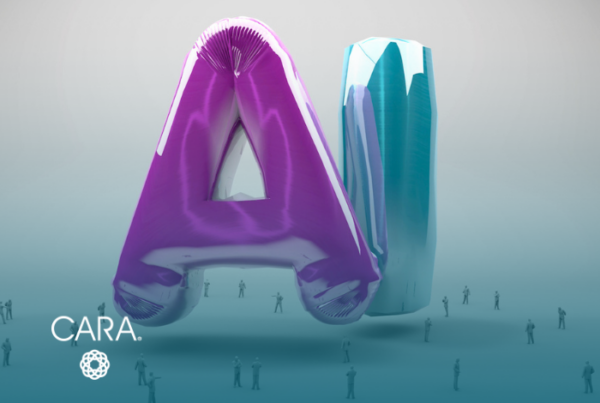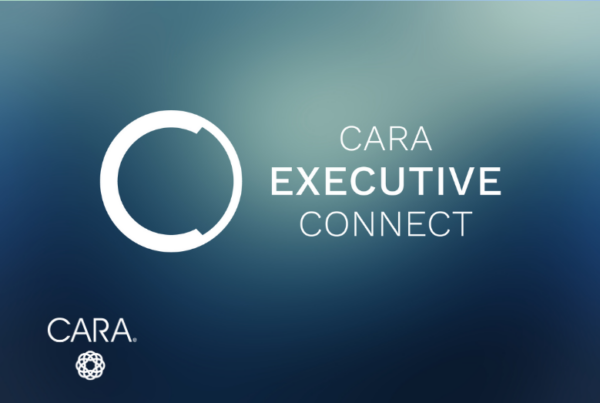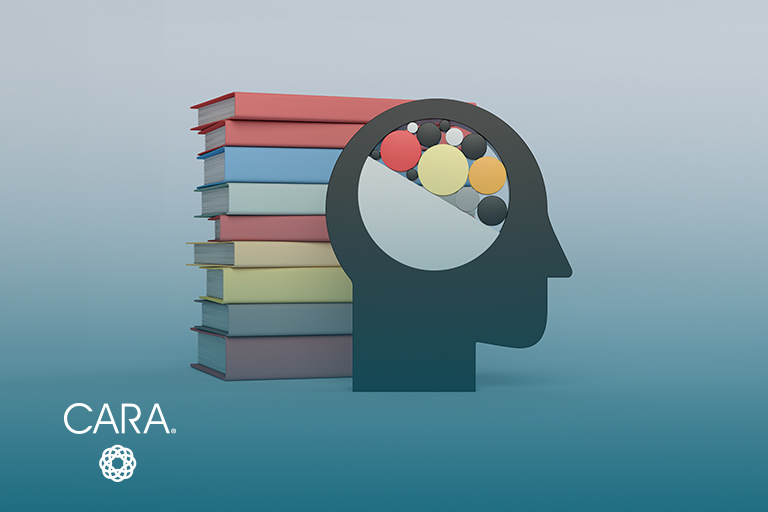
Welcome back learner persona enthusiasts! In the previous article (How Learner Personas Can Enhance your Instructional Design Approach, Part 1) we showed you how five personas captured the core learning motivations of our healthcare emerging leader program population. We described our research process and how we identified participants’ core learning preferences and goals, along with how to best reach them in support of their leadership development needs. Through our analysis, we identified key ways that individuals tended to show up as learners: Champions, Change Agents, Achievers, Connectors, or Troubleshooters.
“Where our learner personas made the biggest difference was in enhancing our design to include instruction and activities that were essential to enhance the learning experience of our participants.”
As a reminder, here is how these five learner personas were defined based on our research:
- Champions: Individuals who, above all else, are passionate about making a positive impact on peoples’ lives, providing exceptional above-and-beyond service, and demonstrating a calm and positive approach when working through challenge and conflict.
- Change Agents: Individuals who are proactively forward-focused on improvements and see themselves as advocates for positive change within their role and the organization at large. Those individuals who pride themselves, above all else, on being flexible, agile, and resourceful when adapting to change—both incremental & breakthrough.
- Achievers: Self-motivated individuals who set a high bar on their personal performance and engage in a relentless pursuit of their ongoing growth and improvement. Those who are driven to be best-in-class in their area of expertise and continually push themselves outside of their comfort zone.
- Connectors: Individuals who are focused on making an authentic and personal connection with others (both colleagues and patients alike), model what it means to foster a collaborative team environment and strive to do what is needed in the service of achieving the highest-performing team possible.
- Troubleshooters: Individuals who are driven to leverage their skills, knowledge, experience, and creativity when addressing challenges and solving problems. Those who are motivated in demonstrating the initiative to explore creative and out-of-the-box solutions, while building a reputation for being a “go to” resource within their specific area of expertise.
Through our research, we also obtained the following data to describe the goals that different individuals desire as part of their learning experiences:
- Apply Skills & Knowledge: Having an opportunity to incorporate their technical/functional knowledge and expertise; staying up-to-date on best practices in their field; observing and learning from others who demonstrate expertise.
- Meet Challenges: Having ways to apply their learning experientially while practicing while doing; troubleshooting solutions to refine their approach.
- Set & Achieve Goals: Establishing structured learning goals with an opportunity to assess their progress; ensuring a clear understanding of, and alignment with, the “why.”
- Flexibility & Independence: Acquiring learning in a flexible manner, including using blended methods and an opportunity to access on-demand content.
- Build Relationships: Working with others to solidify their understanding and exchange insights gathered from topics to reinforce content learning.
- Innovation & Creativity: Ideating and iterating when solving problems and identifying new opportunities.
- Reflective Introspection: Reflecting upon concepts, new insights, and how to apply them; taking practical and tangible next steps to reinforce their learning.
With these foundational elements in place, we were then able to assess how the personas aligned across two distinct and equally important learning spectrums—key learning drivers (short- vs long-term) and overarching leadership interests (intrinsic vs extrinsic). As illustrated below, Champions tend to be intrinsically motivated based on the satisfaction they obtain from helping others and demonstrating leadership in-the-moment. Conversely, intrinsically motivated Achievers are focused on how actions they take today position them to achieve their long-term leadership development goals. While Change Agents are extrinsically motivated toward immediate ways they can influence and lead proactive change, Connectors are guided by the synergy obtained from maintaining network relationships as a way to achieve goals together. Finally, Troubleshooters are agile and flexible, leveraging both short- and long-term opportunities to solve problems and demonstrate leadership in their roles.
Learner Persona Spectrums
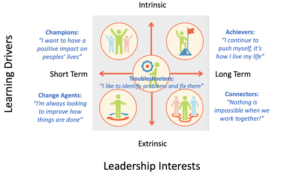
You may be thinking, “This all sounds great, but exactly how did this help you to design your leadership development program?” Great question. Let’s get to it. In short, we leveraged these learner personas by including training methods and topics that we knew were critical to our participants. Where our learner personas made the biggest difference was in enhancing our design to include instruction and activities that were essential to enhance the learning experience of our participants. We listened to the powerful examples of learner personas brought to life based on how individuals engaged with their colleagues and patients. Through these examples, we understood how to best tap into individuals’ leadership and learning interests, from their own words. The following table captures a summary of participants’ key motivators, mottos that guide their work (from their direct quotes), learning goals, preferences, how to reach them, barriers to learning, and leadership interests.
When combined, these key learner persona elements are provided below and highlight critical aspects addressed in the development of the emerging leader program.
Learner Persona Instructional Design Dimensions
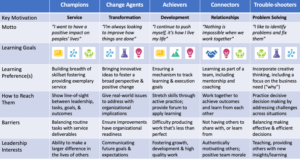
In the end, the Emerging Leader Program was designed to meet the needs of all five learner personas, as described above. The program objectives were to implement an interactive learning experience that provided participants with practical concepts, tools, and techniques to develop their leadership skills. The program target audience included employees of color who were ‘ready now’ for, or recently promoted to, a first-time leadership role. It was our goal that by completing the emerging leader program, individuals would not only solidify their readiness to take on a leadership role but also shorten their learning curve and increase their probability of success in the process. One key factor in achieving this was aligning our learner persona details throughout the program’s design.
We also developed an Emerging Leader Learning Journey map to demonstrate how individuals would progress through the program components. The learning journey illustrated the pathway through the program, following a Leading Self, Leading Others, and Leading the Business framework. This included specific learning content that began with fundamental concepts for transitioning to leadership, involved content on leading teams and creating an inclusive team culture, as well as content on developing business acumen and understanding compliance, laws, and policies relevant to a leadership role. The learning journey also described specific milestones through the 12-week program, along with delivery method (which was a blend of online a-synchronous self-study combined with virtual instructor led weekly sessions.). We were intentional in designing the program to leverage their technical skills and comfort in working with technology, ensuring flexibility (with structure) to focus their learning, and providing a ‘sandbox’ with multiple experiential opportunities to practice new skills while working together.
We hope you found this case study example both interesting and informative. It was a fascinating opportunity for us to incorporate learner personas into our design approach. As instructional design and learning professionals, we are always looking for new ways to enhance our process and end results for our clients. This article series shows how learner personas provide an important tool to add to our toolkit to help us achieve this goal.

